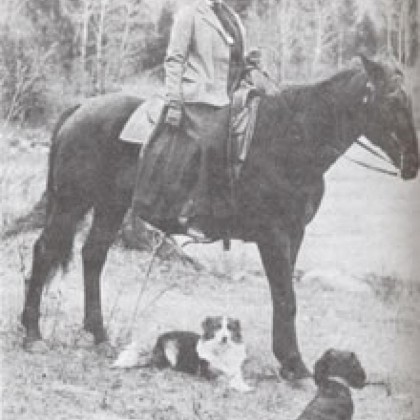Artwork
-
Inquire for pricing
Biography
Emily Carr (1871-1945)
“I think that one's art is a growth inside one. I do not think one can explain growth. It is silent and subtle. One does not keep digging up a plant to see how it grows.” - Emily Carr
Painter and writer Emily Carr interpreted the Pacific Northwest landscape and its indigenous culture at a time when these subjects were unfamiliar outside of this region. Carr's father encouraged her artistic inclinations, but it was only in 1891, after her parents' deaths, that Carr pursued her art seriously. Carr attended the San Francisco Art Institute for two years (1890–1892). In 1899 Carr travelled to London where she studied at the Westminster School of Art. She travelled also to a rural art colony in St Ives, Cornwall, the Victoria-born artist then returned to Canada where she began painting the land around her. She became increasingly drawn to all things Canadian, to nature in its majesty, and to the important influence of First Nations people, culture, and traditions.
In 1898 Carr made the first of several sketching and painting trips to aboriginal villages, visiting Ucluelet on the west coast of Vancouver Island, home to the Nuu-chah-nulth people, then commonly known to English speaking people as 'Nootka'. While on holiday in Alaska with her sister Alice in 1907, Carr again came into contact with indigenous peoples in remote villages and determined to use her art to document the sculptural and artistic legacy of the aboriginal people she encountered there
Carr was an independent woman and a Westerner who gained prominence at a time when Western Canadians and women artists were not recognized internationally. Carr lived in a time when opportunities for women were limited and her trips into the forest were seen as somewhat eccentric and inappropriate by her peers. She nevertheless gained a significant reputation, as a painter, writer, potter, illustrator, and textile artist and was a cultural pioneer in Victoria where she lived for many years. She was not able to give up her day job and managed a boarding house for many years. Through it all, Emily Carr spoke her mind.
It was at the exhibition on West Coast aboriginal art at the National Gallery in 1927 that Carr first met members of the Group of Seven, at that time Canada's most recognized modern painters. Lawren Harris of the Group became a particularly important support: "You are one of us," he told Carr, welcoming her into the ranks of Canada's leading modernists. The encounter ended the artistic isolation of Carr's previous 15 years leading to one of the most prolific periods, and the creation of many of her most recognizable works
